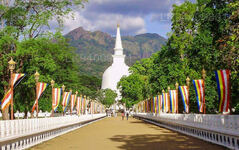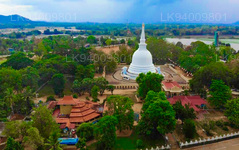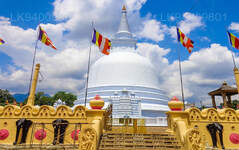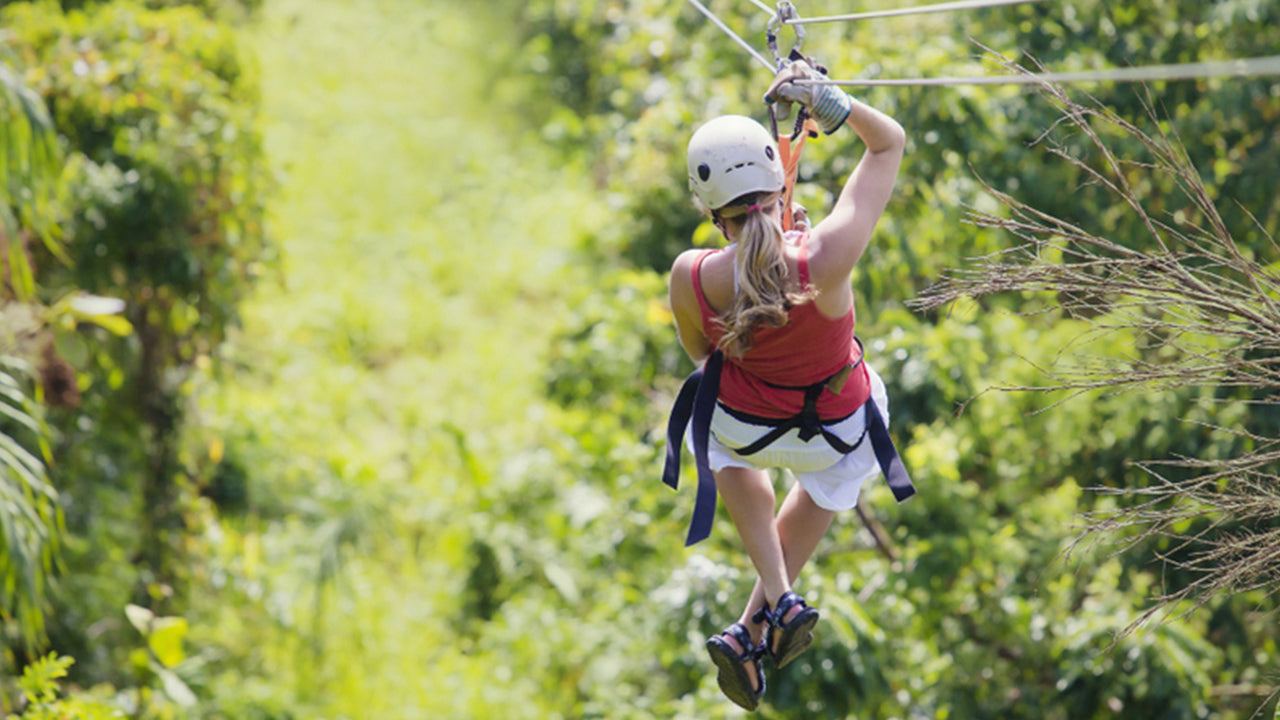
Badulla City
Badulla: Scenic town in Sri Lanka's hill country, surrounded by lush tea plantations and offering picturesque landscapes, waterfalls, and cultural sites.
Mahiyangana Viharaya
Mahiyangana According to Mahavamsa, Sivuhelaya (Sri Lanka) was peopled by Sivu-Helayos. The Yakkhas (clan) were living in Mahiyangana at the time. It says that the Buddha held a discussion on Dhamma with them. A Yakkha chieftain named Saman (who is now regarded as a deity) attained Sotapanna (First stage in liberation) after listening to the Buddha’s discourse and requested a token from the Buddha that they could worship in his absence. The Buddha gave him a handful of hair relic from his head, which was later enshrined by Saman in a small stupa, 10 feet (3.0 m) in height. This was the first stupa to be built in Sri Lanka during the life time of Lord Buddha. After the parinirvana of the Buddha, an Arhant named Sarabhu brought the Buddha’s left shoulder bone, which had been recovered from the funeral pyre. This relic was also enshrined and the Stupa was enlarged to a height of 18 feet (5.5 m). Since then several kings renovated and enlarged this Stupa. King Dutugamunu raised it to a height of 120 feet. Rulers as Voharikatissa, . Sena II, Vijayabahu I and Kirthi Sri Rajasinghe have maintained the temple. In 1942, a society was formed for the renovation of the temple under Rt Hon. D. S. Senanayake the first Prime Minister of Sri Lanka. Reconstruction work began in 1953 and ended in 1980 with the completion of a new pinnacle for the Stupa.
Special places in Badulla
-
 Muthiyangana Raja Maha Vihara
Muthiyangana Raja Maha ViharaMuthiyanganaya Raja Maha Viharaya lies in the centre of the city of Badulla. The History of this temple goes back to the time of Buddha but this area around Badulla goes way back in to the time of 19th -18th century BCE.
-
 Dowa Raja Maha Viharaya
Dowa Raja Maha ViharayaDowa Raja Maha Viharaya (Dowa Cape Temple) lies few kilometres away from the Bandarawela town on the Bandarawela – Badulla Road. This temple is thought to be done by King Walagamba in the in first century BC.
-
 Bogoda Wooden Bridge
Bogoda Wooden BridgeThe Bogoda Wooden Bridge was built in the 16th century during the Dambadeniya era. This is said to be the oldest surviving wooden bridge in Sri Lanka. The bridge is situated at 7 kilometres (4.3 mi) west of Badulla.
-
 Dunhinda Falls
Dunhinda FallsDunhinda Falls is situated about 5 km away from Badulla town. It is 63 meters high and is considered to be one of the most beautiful waterfalls in Sri Lanka. The falls gets its name dew to the smoky dew drops spray.
About Badulla District
Badulla is the capital of Uva Province in Sri Lanka. Badulla is located on the southeast of Kandy, almost encircled by the Badulu Oya , about 680 meters (2200 ft) above sea level and is surrounded by tea plantations. The town is overshadowed by the Namunukula range of mountains. Badulla is about 230km away from Colombo towards the eastern slopes of central hills of Sri Lanka.
Badulla and surroundings are highly recommended for eco-tourists as Horton Plains National Park and the Knuckles mountains are few hours away.
About Uva Province
The Uva Province is Sri Lanka's second least populated province, with 1,187,335 people, created in 1896. It consists of two districts called Badulla and Moneragala The provincial capital is Badulla. Uva is bordered by Eastern, Southern and Central provinces. Its major tourist attractions are Dunhinda Falls, Diyaluma Falls, Rawana Falls, the Yala National Park (lying partly in the Southern and Eastern Provinces) and Gal Oya National Park (lying partly in the Eastern Province). The Gal Oya hills and the Central Mountains are the main uplands, while the Mahaweli and Menik rivers and the huge Senanayake Samudraya and Maduru Oya Reservoirs are the major waterways in Uva province.
【Text by Lakpura™. Images by Google, copyright(s) reserved by original authors.】
















